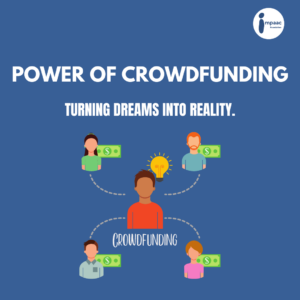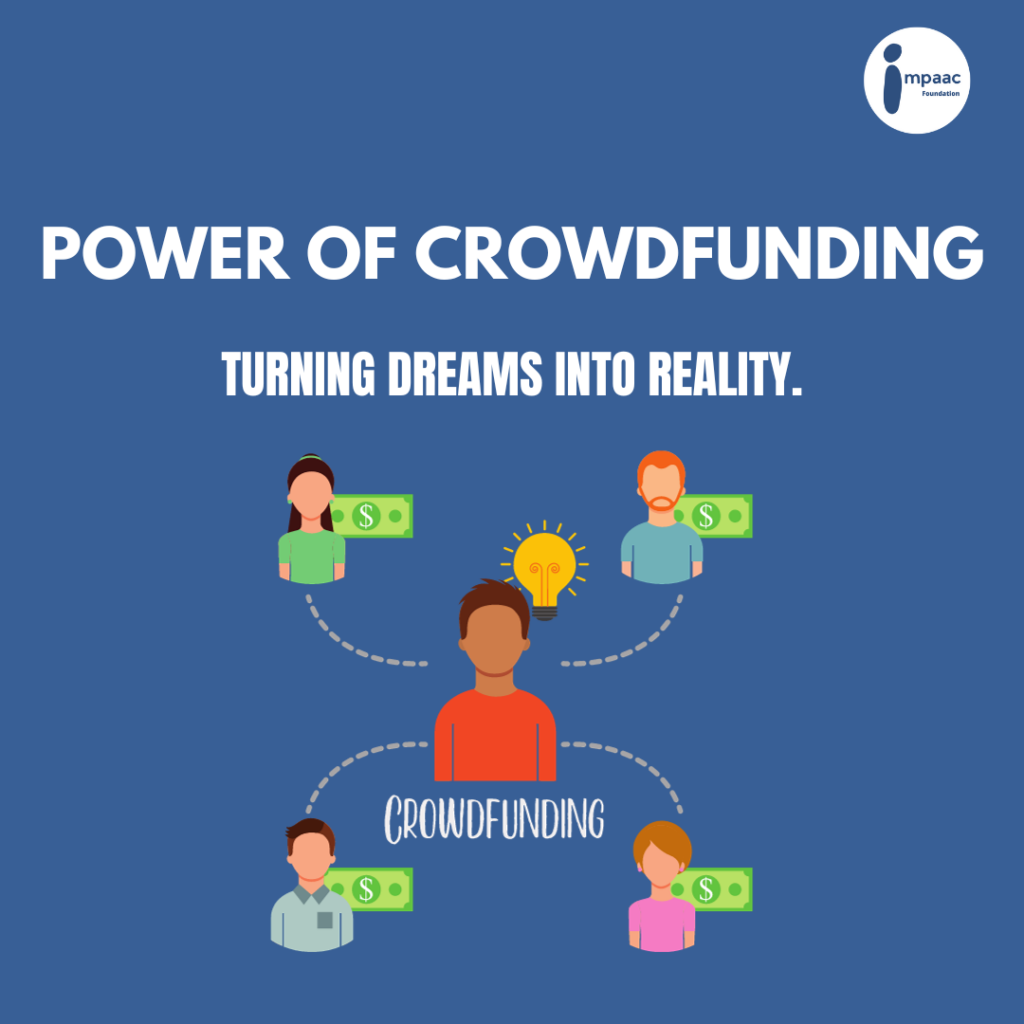In today’s digital age, crowdfunding has emerged as a game-changing phenomenon. It has revolutionized the way individuals, entrepreneurs, and organizations raise funds for a wide range of projects and causes. Whether you’re an aspiring artist looking to produce your debut album, a budding inventor with a groundbreaking idea, or a charitable organization seeking support for a noble cause, crowdfunding offers an accessible and innovative solution. In this blog, we will explore the world of crowdfunding, its significance, and how it has transformed the way we bring our dreams to life. 
The Rise of Crowdfunding
Crowdfunding is the practice of raising funds from a large number of people, typically online, to finance a project, venture, or cause. It is a testament to the power of the internet, social media, and online communities in enabling individuals to connect and support each other’s dreams. Platforms like Kickstarter, Indiegogo, GoFundMe, and Patreon have democratized fundraising, making it accessible to anyone with a compelling idea and an internet connection.
The rise of crowdfunding can be attributed to several key factors:
1. Accessibility : Crowdfunding platforms are open to anyone, irrespective of their background or location. This inclusivity ensures that innovative ideas and causes from all corners of the world can find support.
2. No Need for Traditional Investors : Crowdfunding allows project creators to bypass the traditional route of seeking investors or loans, which can be challenging, time-consuming, and competitive. Instead, they can appeal directly to their target audience.
3. Market Validation : Crowdfunding serves as a validation mechanism. If a project gains traction and receives adequate support, it’s a strong indicator of market interest, providing invaluable feedback to creators.
4. Diverse Funding Models : Crowdfunding offers various funding models, including reward-based, equity-based, donation-based, and subscription-based crowdfunding. This flexibility caters to a wide range of project types
Types of Crowdfunding
Crowdfunding comes in various forms, each tailored to the specific needs of project creators. Here are some of the most common types:
1. Reward-Based Crowdfunding : Creators offer backers rewards in exchange for their contributions. These rewards can range from exclusive access to the product or project to limited edition merchandise.
2. Equity Crowdfunding : Investors receive equity in the company in exchange for their contributions. This is commonly used by startups and small businesses to raise capital.
3. Donation-Based Crowdfunding : This is often used for charitable and personal causes. Contributors donate funds without expecting anything in return other than the satisfaction of supporting a worthy cause.
4. Peer-to-Peer Lending : Borrowers seek loans from individual lenders through crowdfunding platforms. Interest rates and repayment terms are typically agreed upon in advance.
5. Subscription-Based Crowdfunding : Creators offer exclusive content or experiences to subscribers in exchange for a regular monthly contribution. This model is often used by content creators, artists, and influencers.
Success Stories
Crowdfunding has been the catalyst behind numerous success stories. Some notable examples include:
1. Pebble Time : The smartwatch manufacturer Pebble raised over $20 million on Kickstarter, far surpassing their initial goal. This proved the demand for wearable technology.
2. Oculus Rift : Before its acquisition by Facebook, Oculus VR used Kickstarter to fund the development of the Oculus Rift, a groundbreaking virtual reality headset.
3. Exploring Space : Organizations like The Planetary Society have successfully crowdfunded space exploration missions, bringing astronomy enthusiasts closer to the cosmos.
Challenges and Considerations
While crowdfunding offers a remarkable path to funding, it’s not without challenges. Creators should consider the following:
1. Competition : Crowdfunding platforms are crowded with projects. To stand out, creators must have a compelling pitch and marketing strategy.
2. Fulfillment : Meeting backer expectations and delivering on promises is crucial. Failure to do so can damage a creator’s reputation.
3. Legal and Regulatory Challenges : Crowdfunding is subject to various regulations, depending on the funding model and location. Creators must be aware of these to avoid legal complications.
4. Market Saturation : Certain categories, like tech gadgets, can be oversaturated, making it harder to gain attention.
Conclusion
Crowdfunding has unlocked a world of opportunities for dreamers, innovators, and change-makers. It has allowed us to explore uncharted territories, support worthy causes, and turn creative visions into reality. With its power to democratize fundraising, validate ideas, and connect people worldwide, crowdfunding is set to continue reshaping the way we bring our dreams to life. So, whether you have a passion project, a groundbreaking innovation, or a noble cause close to your heart, consider harnessing the power of crowdfunding to turn your aspirations into achievements, one contribution at a time.




